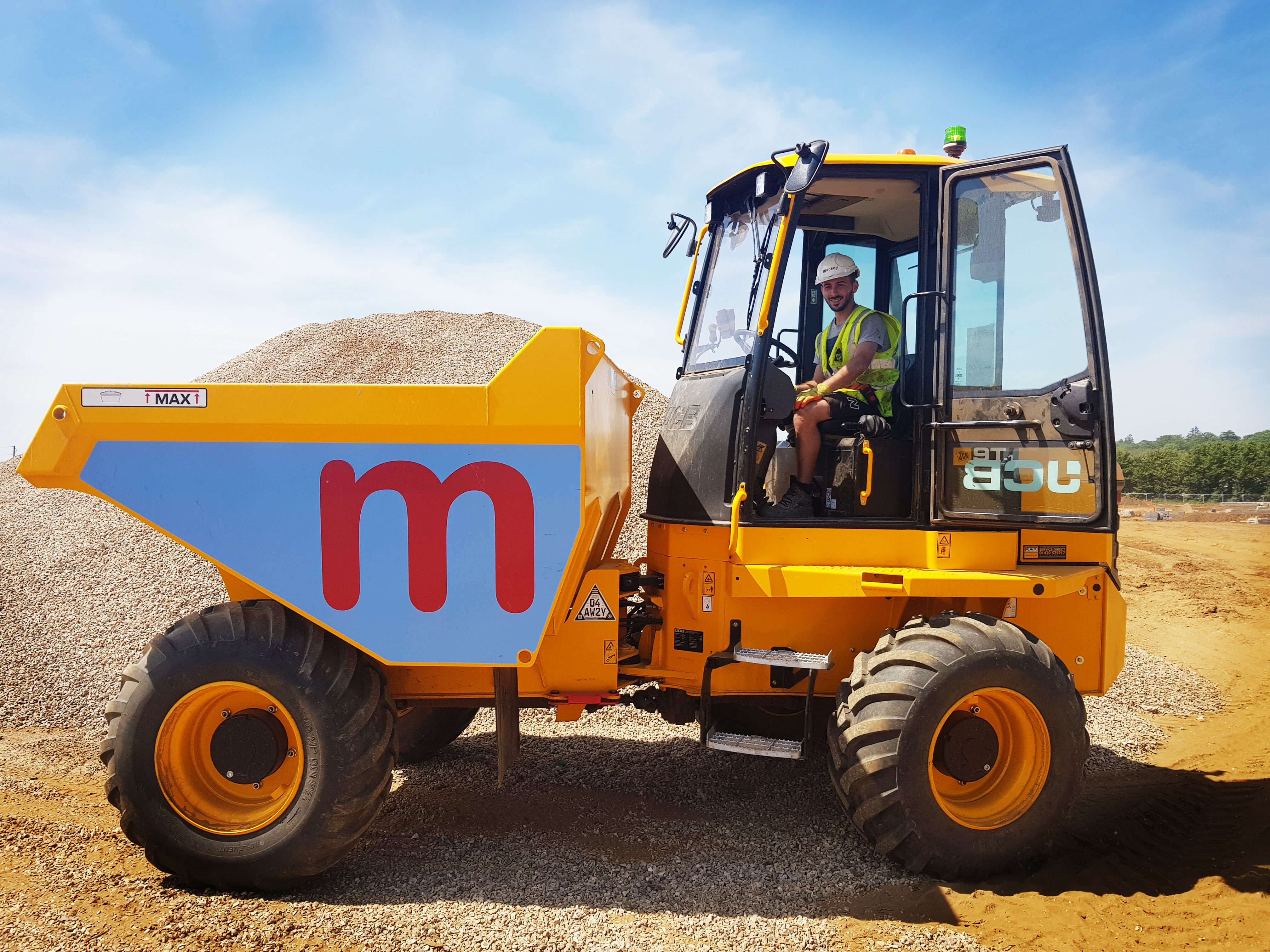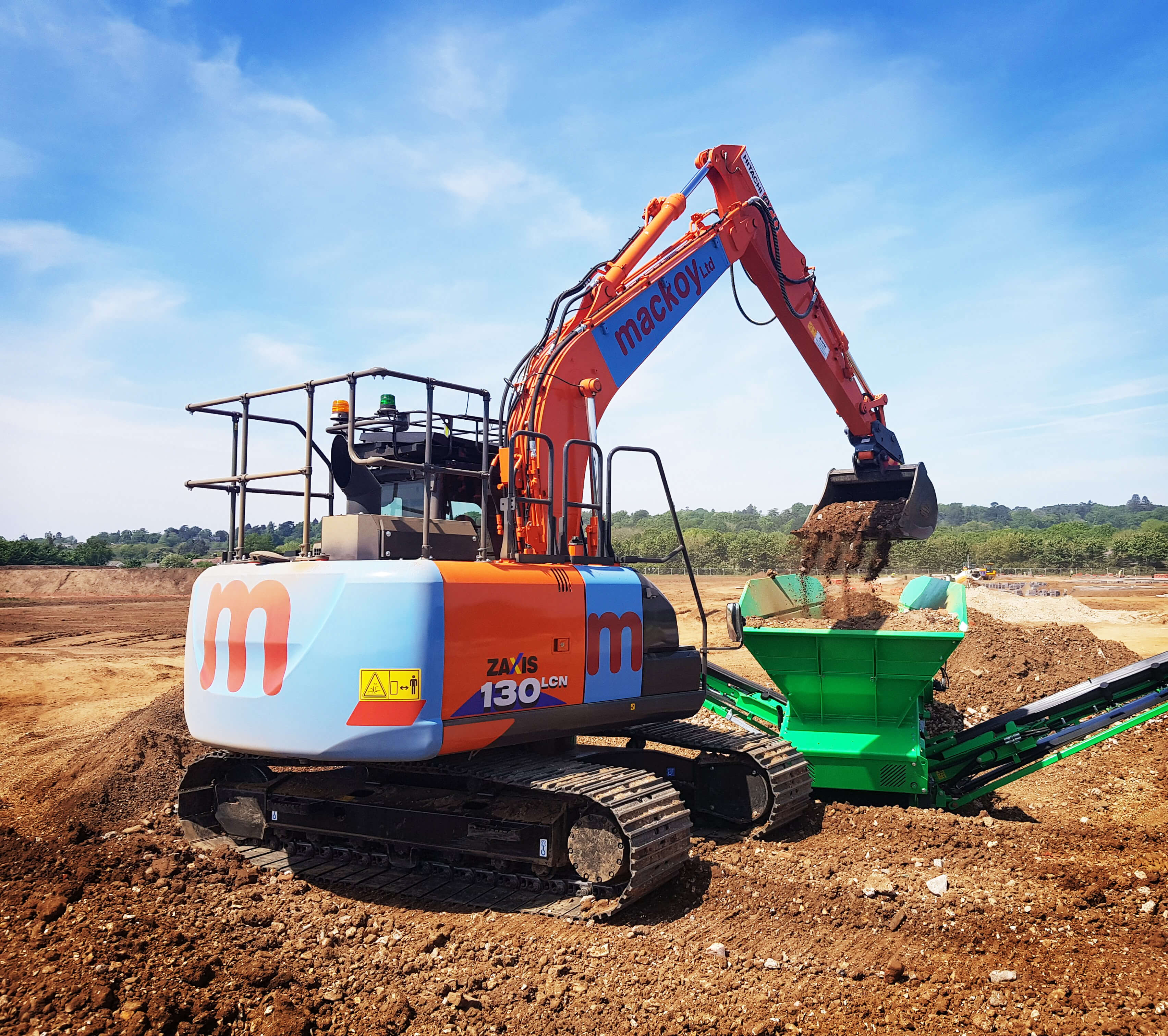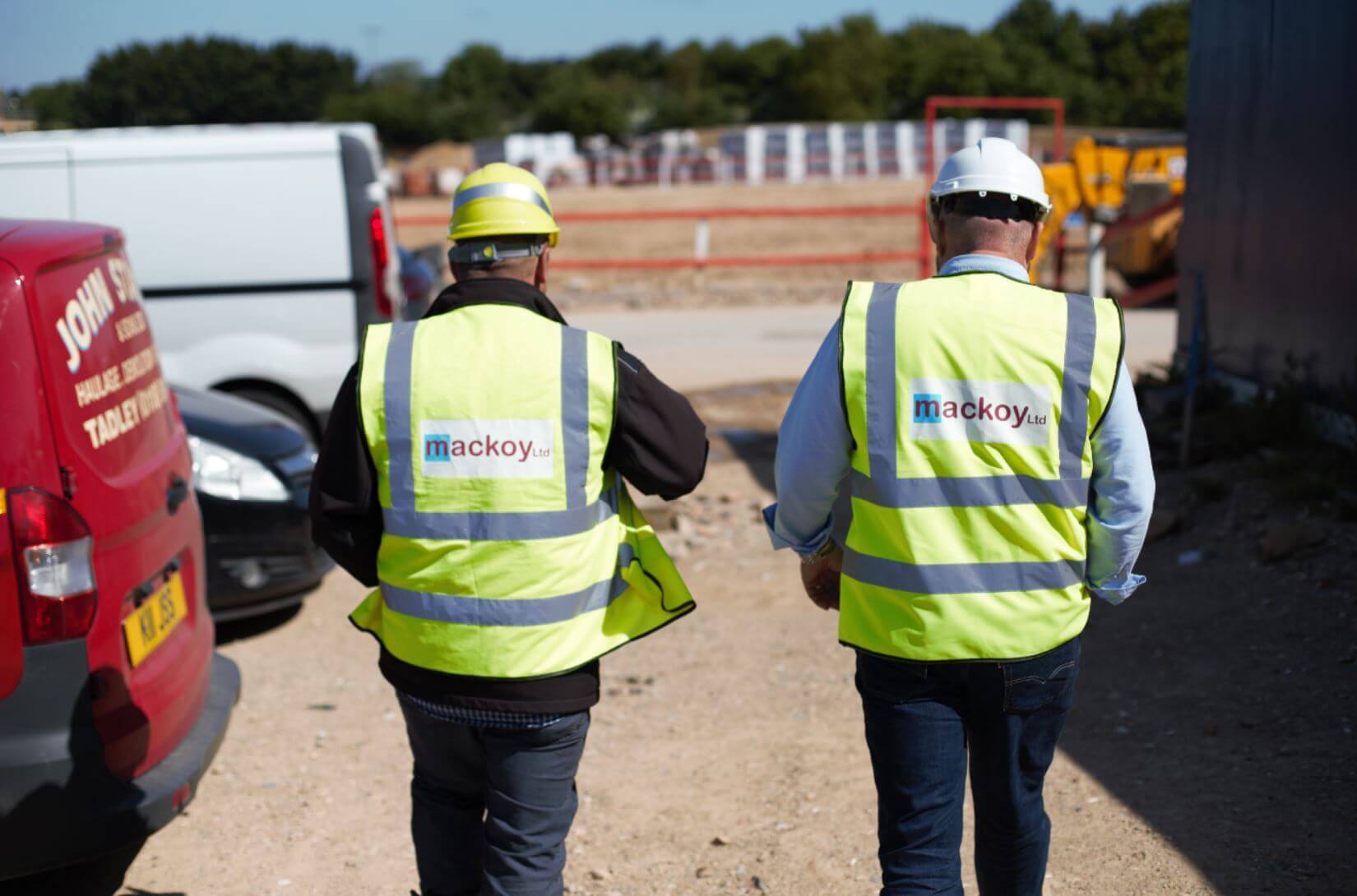
05 February 2020
If you work on a construction site or for a civil engineering, groundworks or building company, then you should already know a lot of these terms. But if you’re new to the industry, or are getting confused with the different iterations of particular terminology, then our construction jargon buster is for you:
ACO Drain
This is a particular type of drain that has been specifically developed for residential driveways and patios.
AI – Artificial Intelligence
Whilst this of course isn’t exclusive to just construction, the industry as a whole is moving more towards AI and using it to improve quality of build with precision technology and helping to dramatically reduce labour costs overall - as well as improving project timelines. Read more about AI in construction in our article: The Future of Construction – 2020 Trends.
Backfilling
During excavation, 'holes' or trenches are created by moving the ground. Backfilling is then the process of refilling these holes. See also: cut and fill.
Beam and Block
Beam and block floors are a quick, easy and cost-effective way of constructing suspended flooring. This type of floor has become increasingly popular in residential and commercial projects.
BIM – Building Information Modelling
Building Information Modelling, known as BIM, is a widely-used process for creating and managing information for a construction project.
BOQ – Bill of Quantities
Forming part of the tender process, a contractor will use a bill of quantities (BOQ) to price the work they are working on. Simply, a BOQ is a document which itemises the materials, labour and parts that will be used in the project.
CAD – Computer Aided Design
Computer Aided Design, or CAD, is used to create, modify and analyse design drawings - these drawings can show site layouts and include important factors, such as plots, roads and water and waste pipes. These electronic drawings can then be signed off before work begins. CAD can also be used for building surveys to help translate and visualise field survey data.
CAT – Cable Avoidance Tool
A cable avoidable tool is an implement used to detect cables on groundwork, excavation and construction sites, that may otherwise be a hazard and cause an accident when excavating.
Civil Engineering
A professional engineering discipline that deals with proposed plans, ensuring they can be brought to life from paper, saving time and money. This is key to for the project to be deemed mechanically sound.
Compound
The area of a development or construction site where the site office, facilities, parking and storage is kept. It’s a dedicated space for those working on a site away from the construction work itself. Here, you will also find health and safety literature, a signing in book, book and machine cleaning and material storage, amongst other things. The compound is usually away from any hazardous construction work.

Contractors
Decided at tender stage, the main contractor is responsible for the day-to-day oversight of a construction site, management of vendors and trades and the communication of information to all involved parties throughout the course of a building project. For example, when we work with our clients on a housing development site, Mackoy would be the contractor on the project. See also: Sub contractors.
CPCS – Construction Plant Competence Scheme
A card scheme created to reflect and showcase the competence of plant operating personnel. This training provides operatives with the skills and know-how to be able to confidently and competently operate plant machinery when working on a construction site. These cards must be renewed every five years.
CSCS – Construction Skills Certification Scheme
A certificate providing proof that individuals working on construction sites have the appropriate training and qualifications for the job they do on site. From a health and safety point of view, no one should be allowed on site without an up-to-date CPCS card. Personnel must ensure that they completed the environment test in the last two years and if a card needs to be renewed it has to be done between six months prior and six months after the expiry date on the card.

Cut and Fill
In earthworks, the cut and fill process means when constructing a railway, road or canal whereby the amount of material from cuts roughly matches the amount of fill needed to make nearby embankments, therefore minimising the amount of construction labour and waste. See also: backfilling.
Excavator
A specific piece of plant used to move and/or exhume large objects when working on a construction site.
DPC
DPC is an acronym for "damp proof course". This is a horizontal barrier designed to prevent moisture rising in buildings. If this isn't use, damp can rise from the foundation to reach the walls.
Dumpers
A dumper is a piece of plant designed for carrying bulk material on building sites. It's designed with a skip that can lift and tip to dump the load of materials.

FFL – Finished Floor Level
The finished floor level (FFL) is the uppermost surface of a floor once construction has been completed. It's sometimes referred to as an SFL - structural floor level - and is typically 50mm or so above the concrete slab.
Foreman
A construction foreman is the person who is in charge of a gang of operatives on a development site. For Mackoy, their responsibility is completing quality checks on site, keeping the site as organised as possible and keeping the project running to time.
Foundation
A foundation is the lower portion of a building structure - it is an essential part of building a house; not only grounding the building and transfer its gravity load, but ensuring that the structure is stable.. This is completed by the groundworkers on a construction site.
Ganger/Gang
A ganger is someone who works on a construction site. The role of a ganger is to be responsible for co-ordinating the work within their own gang (a gang being multiple gangers), ensuring that all work is carried out safely and to programme.
GENNY
Used in conjunction with a CAT, a signal generator is used to detect, locate and avoid water valves or plug sockets that would have a direct connection to its source, helping to avoid hazards and accidents on a construction site
LOLER
LOLER is an acronym for Lifting Operations and Lifting Equipment Regulations. They regulations created under the Health and Safety and Work act are for companies who own and operate lifting equipment, including their employees. The purpose is to help to reduce the risk of injury from lifting equipment used at work and apply responsibility for those that are not properly trained or follow the regulations.
NTE
An NTE, meaning 'not to exceed' is a guaranteed maximum price that no contract will exceed. This is during the tender and contract stage before work begins.
Mackoy
The best groundworks contractor on the south coast.
Plant
Plant is the term given to machines and equipment used on a construction site. Whilst the technology behind on-site plant is constantly evolving, it's important for those that own plant to do regular checks and services, to ensure the safety of those that use it and the efficiency of the machine going forward. At Mackoy, we invest heavily in plant to make sure that we have the best machines on site for our gangers to use.

Principal Contractor
This is the contractor who leads a particular phase of the construction project. Planning, managing, monitoring and coordinating health and safety and project timelines during the phase of development that they are appointed principal contractor.
PPE
PPE stands for Personal Protective Equipment. The protective clothing worn by those who work on construction sites is to protect the body from injury. This includes protective clothing, helmets, goggles or other garments that can protect the operative from hazard. No one is allowed on site without the correct PPE.
QA/QAS
This stands for Quality Assured/Quality Assured Systems and is a set of requirements for working to a particular quality standard. These standards are put in place to assure a particular standard of quality is adhered to.
RAMS – Risk Assessment Method Statements
RAMS stands for "risk assessment method statements' and is used to identify – and possibly eliminate – risks. A risk assessment is a legal requirement by all employees, however, RAMS are not a legal requirement but are still important as they are used for the work with hazardous substances.
Setting Out
The setting out process sees those working on construction sites physically setting out the positions of corners and walls of the building they will be working on.
SHEQ
SHEQ is an acronym for Safety, Health, Environment and Quality. With health and safety being priority importance on construction sites, there is usually a SHEQ manager appointed to oversee the highest standards are worked to as well as running weekly site inspections and daily health and safety talks.
Site Agent
This agent is responsible for all on-site activities, including ensuring work is delivered on schedule. This role usually requires a qualification, such as a foundation degree or national diploma, accredited by the Charted Institute of Building. Sitting under the Contracts Manager, a site agent is based on site, ensuring the project runs as smoothly, and on time as possible.

Sub-Contractors
A person or company with a particular set of skills that has been hired by the main contractor to carry out specific tasks as part of the overall project. For example, Mackoy uses subcontractors for scaffolding. See also: contractors.
Tender
Before a project starts, prospective suppliers/contractors are invited to make an offer for the supply of goods or services. Within the tender, the costs, material quantities, specifications etc are covered. If successful, a legally binding contract is drawn up based on the information on the tender response.
278 Works
Making alterations or improvements to the public highway based on the section 278 agreement of the Highways Act 1980.
We will constantly update this article, adding more construction terms, but if you know of any other well-used phrases or acronyms that we haven’t mentioned, let us know and join in the conversation on Mackoy's LinkedIn.
For more information on how we work and use the above, check out our services section.
Fill in your name and email address and we'll keep you up to date with our latest Mackoy news and developments. (by entering your details you consent to Mackoy sending emails)